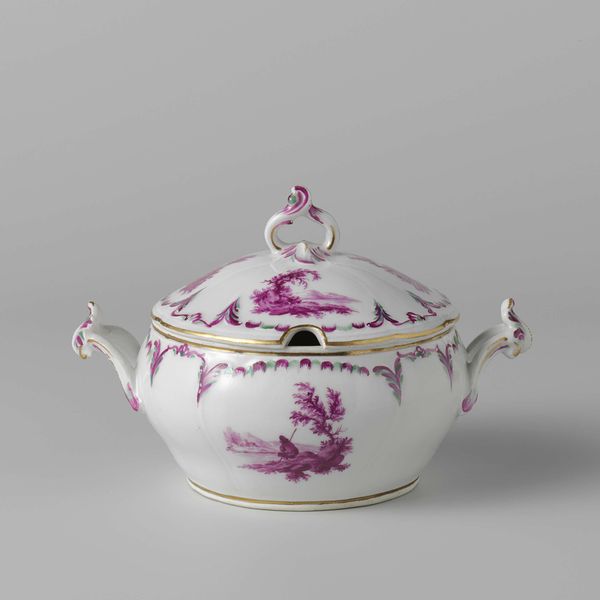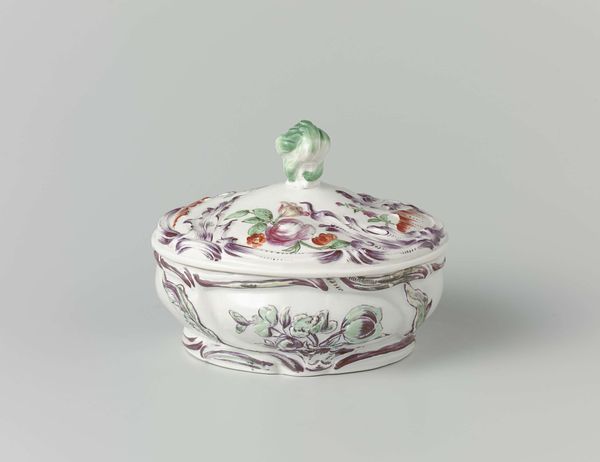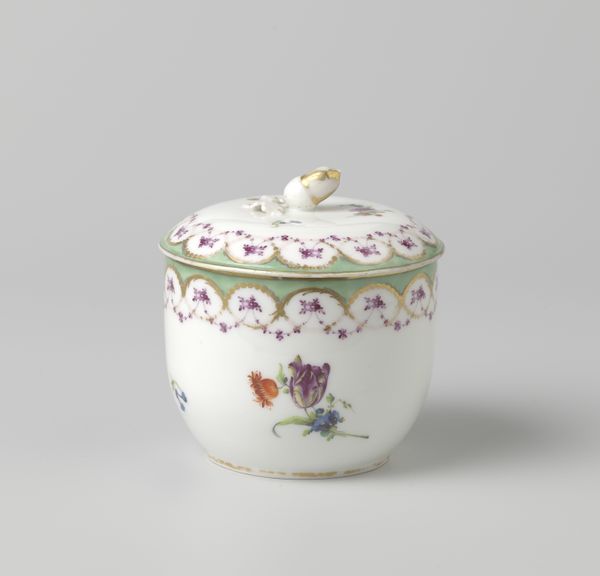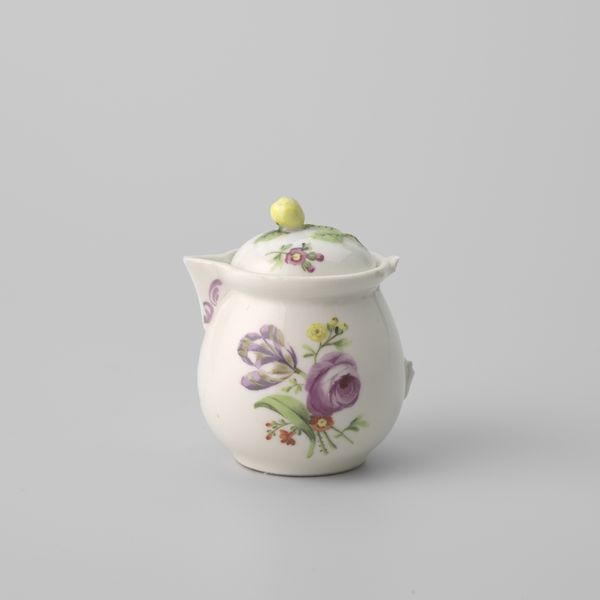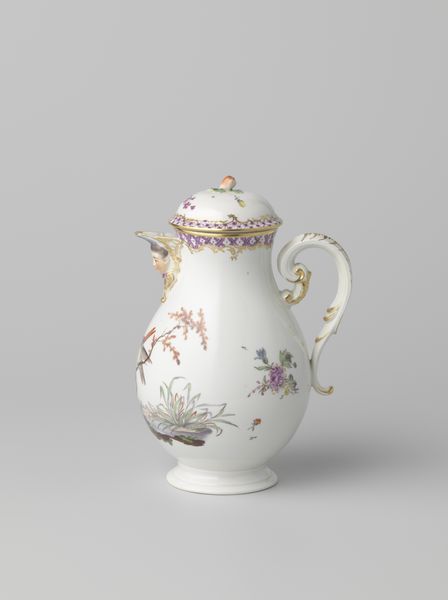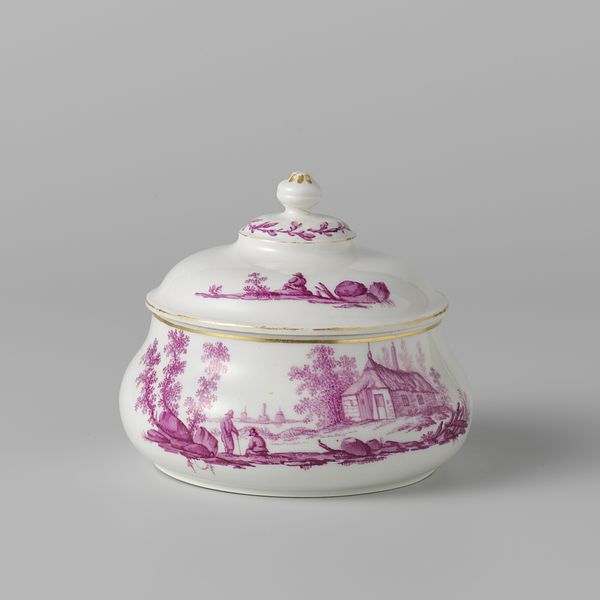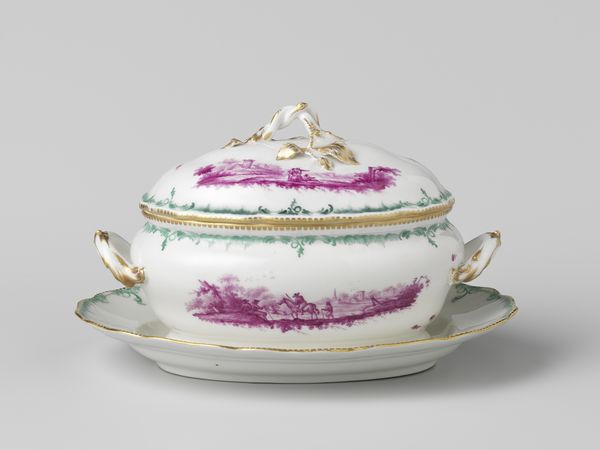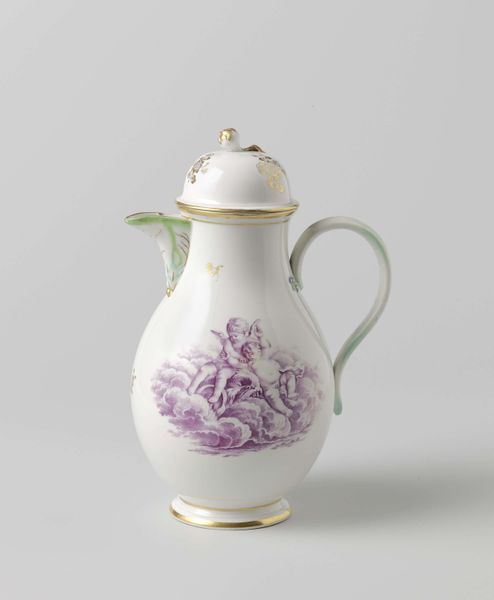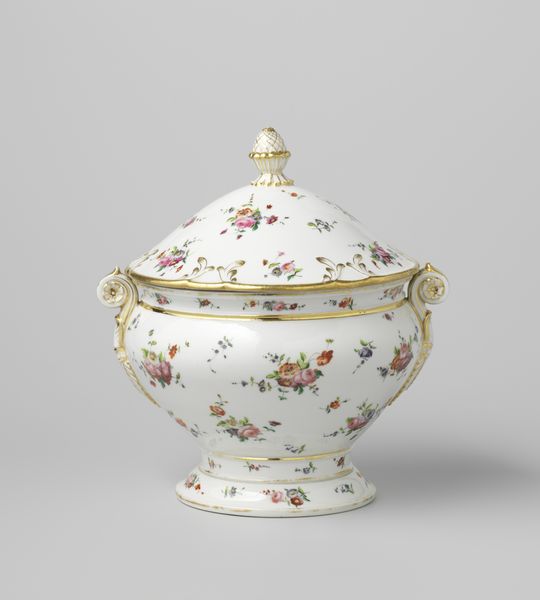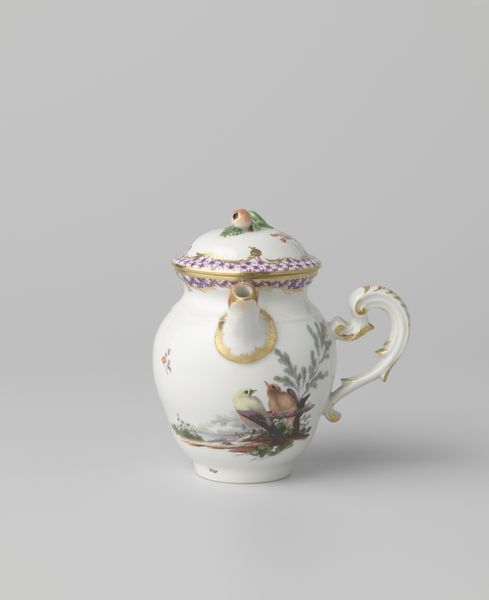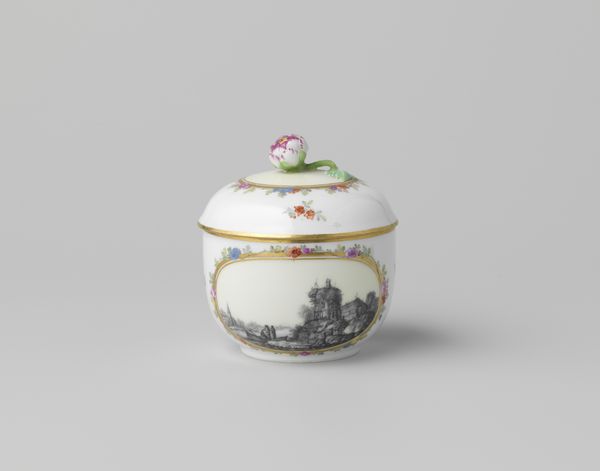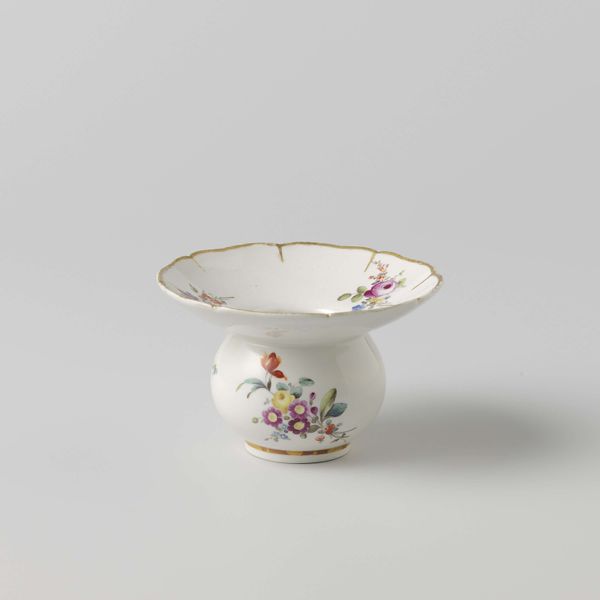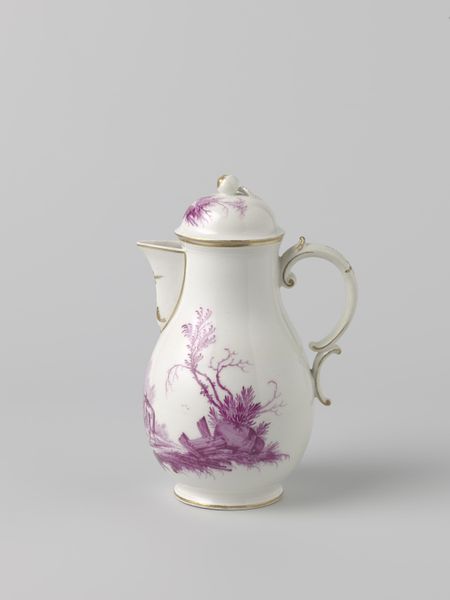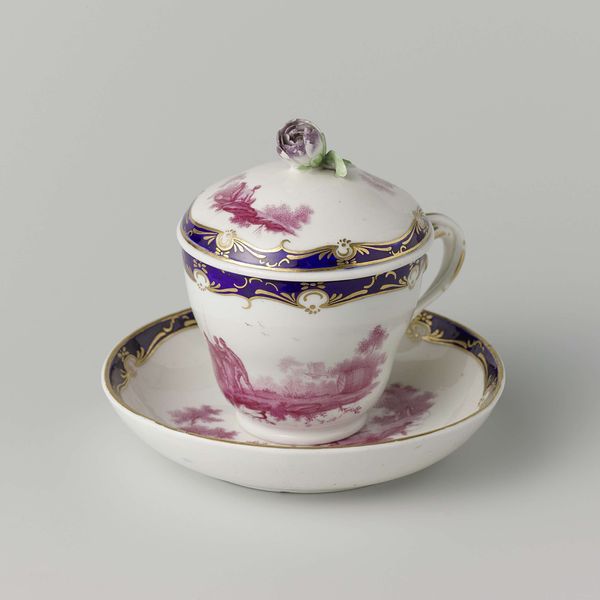
Toiletdoos met draperieën in reliëf en beschilderd met takjes en palmetten c. 1774 - 1778
0:00
0:00
loosdrecht
Rijksmuseum
Dimensions: height 8 cm, diameter 7.3 cm, height 2.8 cm, height 5.5 cm, diameter 5.8 cm
Copyright: Rijks Museum: Open Domain
Editor: Here we have a delightful piece of Loosdrecht earthenware, dating from around 1774 to 1778. The museum calls it "Toiletdoos met draperieën in reliëf en beschilderd met takjes en palmetten." Which translates to Toilet box with draperies in relief and painted with sprigs and palmettes. It feels so dainty and luxurious to me! What can you tell me about it? Curator: This piece speaks volumes about the societal role of porcelain and earthenware in the late 18th century. These "toilet boxes" were not simply functional; they were powerful signifiers of wealth and taste. Loosdrecht, where this piece originates, was vying for a place amongst more established European porcelain factories. Editor: So, it was about more than just needing a little pot for your dressing table? Curator: Absolutely. Think about the Rococo style. It’s all about elegance, asymmetrical forms, and playful ornamentation. How do these objects then reflect the social elite of that time? It's more of a demonstration of one's access to luxury goods than any practical application. Editor: I see what you mean. So the act of owning this kind of detailed object, proudly made with high-quality materials, reinforces social hierarchies of the time? Curator: Precisely. Moreover, the presence of the Toiletdoos in the Rijksmuseum today gives us something to think about when it comes to the cultural institutions, as they have a power in shaping which narratives are remembered and valued. Editor: That’s really insightful. I never thought about something as pretty as a little ceramic box as being connected to social dynamics, class, or museum representation! Thank you! Curator: My pleasure. It is through considering these aspects that we begin to appreciate the true complexity of art history.
Comments
No comments
Be the first to comment and join the conversation on the ultimate creative platform.
